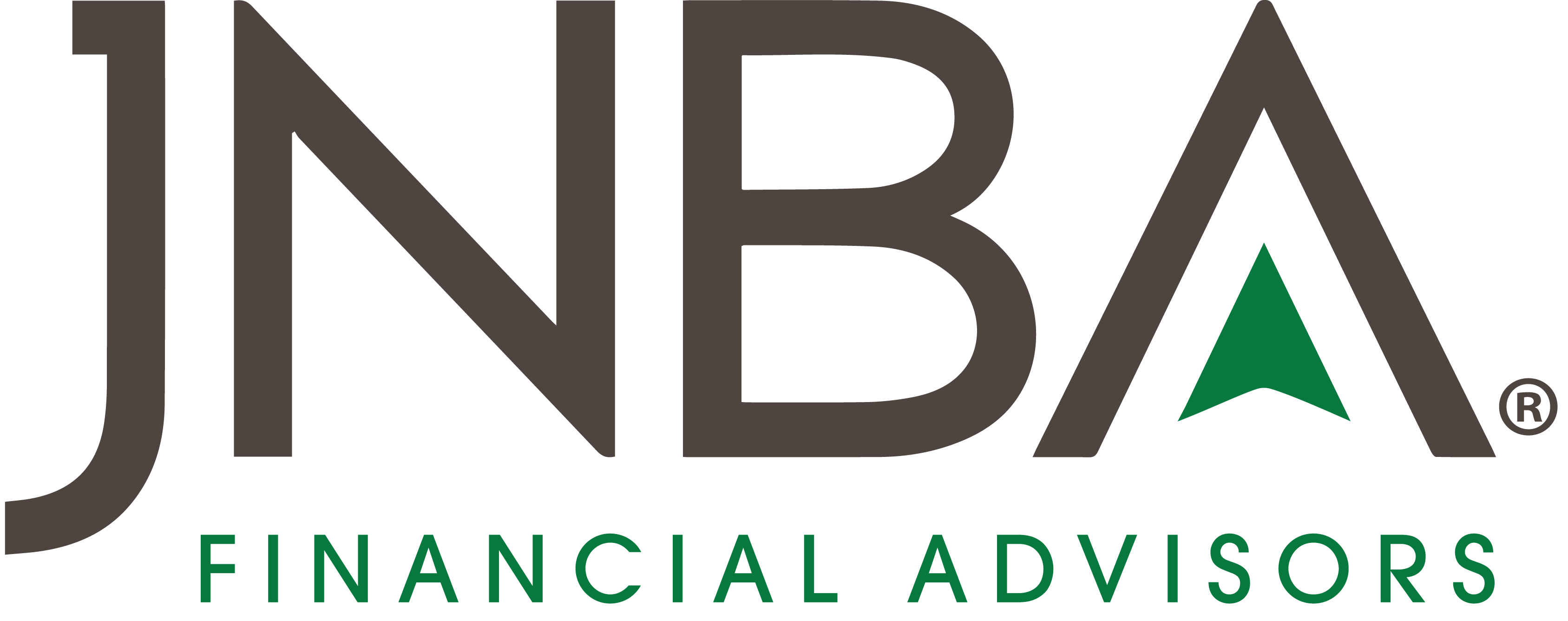As the calendar shifts towards spring, April brought a serious “shower” into the markets, with the new administration’s Liberation Day announcement on U.S. tariff policies released on April 2, 2025. The following days and weeks were a steady drizzle of shifting policies combined with confusing and often contradictory White House statements within hours of each other. These conditions led to a strong “risk off” sentiment settling in as investors tried to flock to safety away from the spring storm. The challenge is that the usual shelter of bonds have also experienced ups and downs with potential inflation and recessionary concerns causing bigger movements for short- and long-term interest rate expectations. While diversified portfolios with international equities and fixed income have held up better than holding only U.S. stocks, the damage done has left many searching for answers for where all this noise will eventually lead.
While the seasonal adage applies — April showers could lead to May flowers, it’s difficult to see how the overall uncertainty in the economic environment gets resolved quickly. Most broad hard economic data is still reporting on what transpired before April 2, and overall soft data like business and consumer sentiment paints a more pessimistic picture. Corporate earnings season (reporting on data only through March 31), hasn’t brought much further clarity. Guidance from companies for earnings expectations for the year have frequently left more questions. Many companies have removed guidance entirely. Some management teams are admitting it’s “impossible” in the current landscape or are providing somewhat concerning scenarios for potential “recessionary environment” due to such a wide range of potential outcomes that impact supply chains, consumer purchasing, and the overall interest rate environment.
As broader discussions with several countries happen on a case-by-case basis, the overall damage from how frequently the messaging has changed recently leads many businesses and consumers alike to question if any resolution will actually be longer-lasting.
Controlling what you can control
With each day bringing new headlines, the long-term priorities for client portfolios can become harder and harder to keep in sight. It’s natural to feel frustration in “staying the course” when markets are so volatile. However, the long-term history of the markets has shown again and again that eventual “flowers” can emerge, albeit potentially later than the month of May. Whenever those days come, our job for long-term portfolios is to be in a position to capture that eventual comeback while prudently defending capital in the short term.
This process is often less dramatic than what many investors expect, with incremental changes across portfolios being utilized over major shifts in strategy and allocations. Controlling what we can control while being focused on the medium- and long-term involves several “boring” but important activities, including:
- Maintaining core long-term positions and diversification: These represent the long-term allocations to each sub asset class (U.S. Large/Mid/Small Caps, International Developed and Emerging Markets, U.S. and Global Bonds) that are positioned to help deliver the long-term results for client portfolios. Performance has differed dramatically YTD across these sub-asset classes, resulting in overall less volatile performance compared to any individual asset class.
- Rebalancing: Because performance has differed across sub-asset classes, the need for rebalancing to keep these allocations to target becomes even more important. We review every client portfolio every 10 business days to keep portfolios in alignment with their strategies as well as systematically taking advantage of market volatility (buying assets that have declined, selling assets that have advanced) and tax loss harvesting to offset future gains. As markets shift, so do portfolio allocations, and without rebalancing, investors may gradually become overexposed to unwanted risks.
- Looking for new opportunities: The dust will eventually settle, and new opportunities will emerge after such a dislocation across various asset classes. We continue to seek out new opportunities that could provide better risk or return profiles, and while there will be no quick fixes we believe more long-term opportunities will emerge. That said, in volatile periods such as this, our “bar of conviction” for any new holding is only raised. In these times, more than ever, we are seeking a solid understanding of the economic environment and key long-term drivers for any investment, trusting the data, and leveraging our entire Investment Committee’s experience to find compelling opportunities.
As your advocate, JNBA continues to diligently monitor the market environment and is committed to keeping you informed. We encourage you to reach out to your JNBA Advisory Team with any questions.
Due to various factors, including changing market conditions and/or applicable laws, the content may no longer be reflective of current opinions or positions. Moreover, you should not assume that any discussion or information contained in this blog serves as the receipt of, or as a substitute for, personalized investment advice from JNBA Financial Advisors, LLC.
Please see important disclosure information at jnba.com/disclosure






